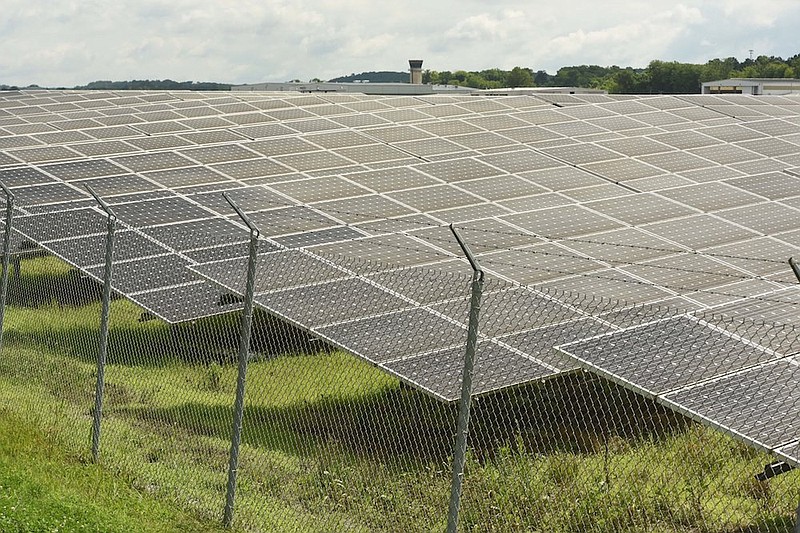The share of electricity coming from the sun is projected to more than double in the South by 2024 from last year's levels, a new study shows.
But the amount of solar power across the Southeast varies widely based upon state policies and utility practices, according to the Southern Alliance for Clean Energy (SACE) which is pushing for more solar generation to help achieve a carbon-free electricity sector to limit global climate change.
In its fourth annual report on Solar in the South, SACE said an average 423 watts of solar generation per customer has been installed by utilities and their customers across the Southeast and that should increase by more than 110% in four years to an average of 889 watts per customer.
Most of that increase is being planned in Georgia, which is adding 672 watts per customer and South Carolina which is boosting solar output per customer by 462 watts.
Among the seven states included in the study of the Southeast solar market, Alabama has the lowest share of solar power and Tennessee is the next lowest.
Stephen Smith, executive director of SACE, said the more limited solar installation in Alabama and Tennessee is a direct result of changes in what the utilities pay consumers for distributed solar energy generation.
Prior to 2009, Smith said Tennessee Valley Authority was a leader in promoting renewable, distributed energy generation by its customers and paid a premium price for power generated by consumers in its 7-state region. But over time, TVA has dramatically cut the price of what it pays for rooftop solar generation sold back on the grid and that has made such installations less cost effective for most homeowners and businesses.
"TVA in the past used its policies to help incentivize this market and I know first hand because I participated in those early programs," said Smith, a former veterinarian who installed solar panels on his home in Knoxville. "Now TVA has dropped the price they pay (to customers for distributed solar power) so low that they have effectively killed the market to a large extent in the state of Tennessee. This is an example of how a utility uses some of the best policy mechanisms and then goes all the way to using some of the worst policy mechanisms and you see the results."
Solar installed per customer
Among the seven southern states, the amount of solar generation per capita in Tennessee and Alabama is less than 20% of the regional average.1. South Carolina, 739 watts per customer2. Georgia, 447 watts per customer3. North Carolina, 758 watts per customer4. Florida, 367 watts per customer5. Mississippi, 286 watts per customer6. Tennessee, 90 watts per customer7. Alabama, 66 waits per customerSource: Solar in the Southeast, Southern Alliance for Clean Energy.
TVA said as the generating costs for producing solar energy fell from more efficient solar panels, the utility phased out its early subsidies for such generation, especially after stagnant and declining power demand left TVA with plenty of its own generating capacity to meet the energy needs of its 7-state region. TVA and its local power companies are installing more solar generation through TVA's Green Invest program that helps ensure customers who want totally renewable power can get such electricity at a reasonable price.
TVA has phased out a majority of its coal-fired power plants and turned to more nuclear, natural gas, solar and hydroelectric generation to meet the region's energy needs. From its historic peaks, TVA has cut its emissions of sulfur dioxide by 99.2%, reduced its output of nitrogen oxides by 97.4% and lowered its carbon emissions by 63%, according to TVA's most recent sustainability report.
Bryan Jacob, author of the Solar in the Southeast report, said during the pandemic last year, new installations of rooftop solar systems on residences stalled in some markets, but installations of utility-scale solar generation jumped to the highest level yet in the region.
TVA's growth in solar generation during the past year moved the federal utility out of the "solar blocker" label that the Southern Alliance for Clean Energy gave TVA last year.
Knoxville Utilities Board, the TVA distributor which has contracted to get up to 20% of its power from new solar farm in the future, was recognized as one of the top "solar risers" in the South. KUB plans to boost its installed solar generation from 59 watts per customer up to 2,552 watts per customer by 2024.
Contact Dave Flessner at dflessner@timesfreepress.com or at 423-757-6340.
